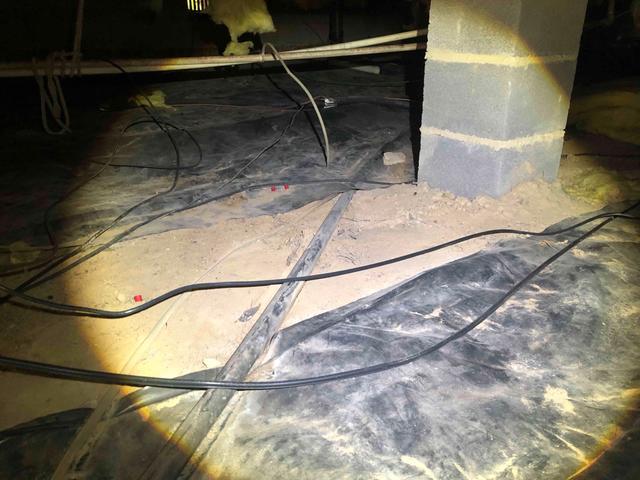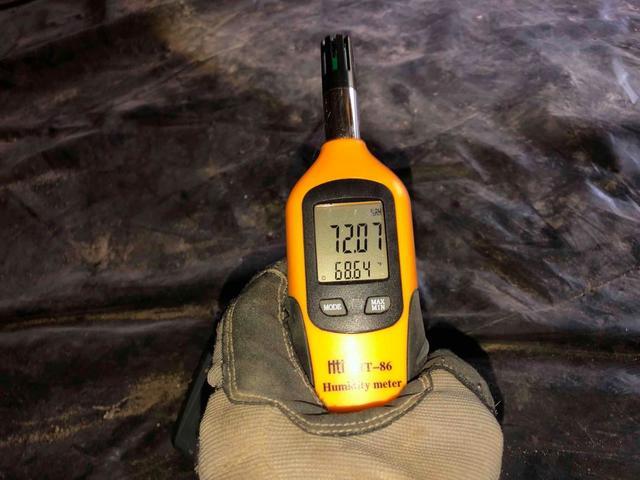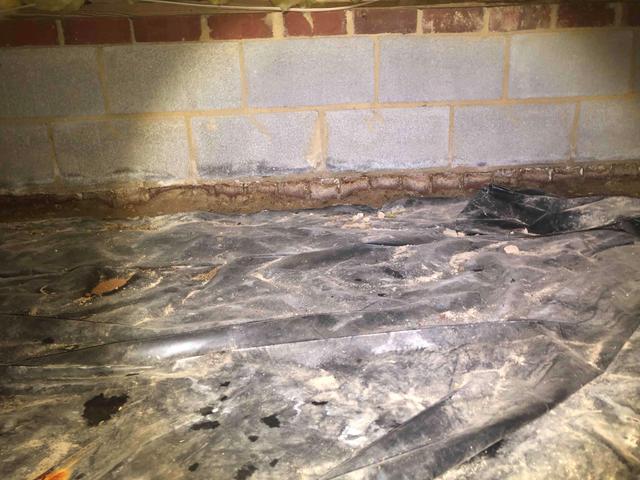
Falling Fiberglass Insulation
The sagging and fallen insulation is a result of the fiberglass absorbing moisture and becoming heavier. The water in the insulation damages the fibers and results in the material pulling apart from itself, as these fibers fall, it begins to look like the insulation is dripping from the floors. The moisture also rusts the rods that hold the insulation up eventually causing them to fail.

6-mil Vapor Barrier
A 6-mil vapor barrier is what is traditionally installed at a home's construction and required by building code. However, it is not required to be sealed to itself or to walls or piers. The material is staked down, creating more holes and weak points for an already flimsy material to tear. Because this liner is not durable it can't be sealed to walls because it will just tear off and has an oily or slick surface that doesn't allow tape to adhere and seal the seams. This means that the 6-mil vapor barrier is allowing water vapor from the earth to rise into the crawl space contributing to its relative humidity and ultimately mold and mildew growth.

Relative Humidity
In ever crawl space, we take a humidity reading. This tells us the relative humidity (RH) of the space, or how much moisture is in the air. This crawl space has a RH of 72%. At about 60% RH, mold and mildew growth can begin to grow as long as it has warm temperatures and an organic food source. In the crawl space, this food source is typically the wood floor joists or paper backing of the insulation. Moisture is also being absorbed by the fiberglass insulation and wood sub structure of your home.

Water Infiltration
Bulk water is not in every crawl space; however, this crawl space does have signs of water infiltration. The staining on the bottom of the block wall suggests that water sat against the wall frequently added to the moisture in the crawl space. We can also see some white spots on the bottom of the foundation wall. These spots are efflorescence, mineral residue pulled to the surface of the block by moisture.

Mold and Mildew Growth
Microbial growth occurs when there are warm temperatures, relative humidity is above 60% and an organic food source is present. The meter in the joist is a wood moisture meter. It tells us the moisture content of the joist, which is about 17% in this case. At about 19% wood moisture content, wood rot can begin, if untreated, this can result in serious problems with the home's structure.


